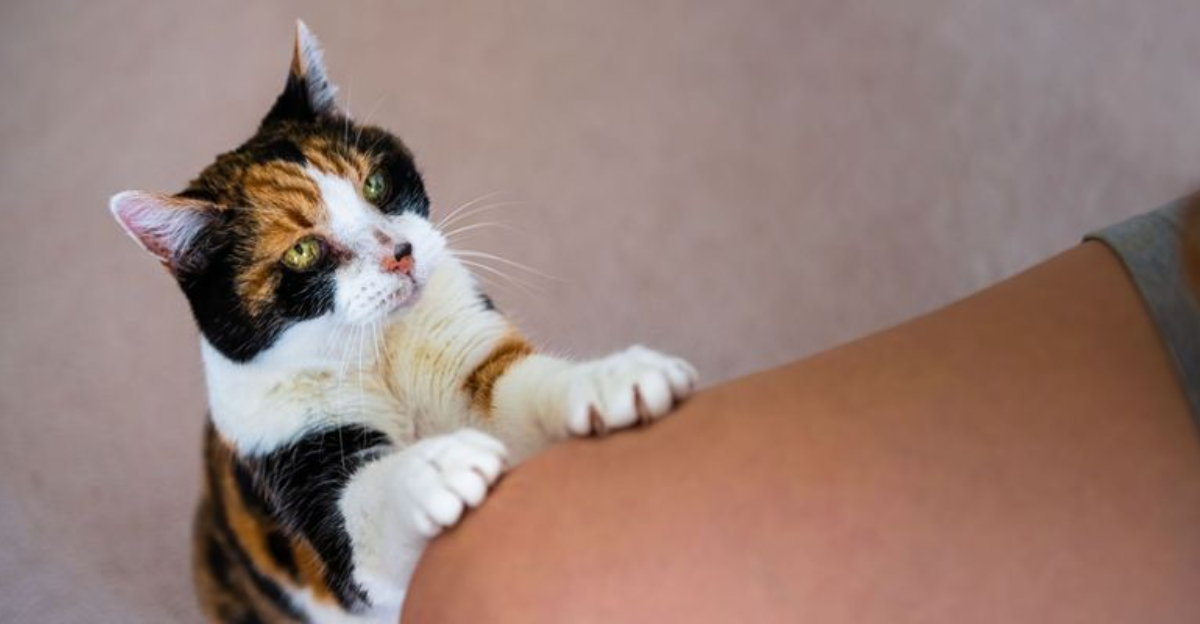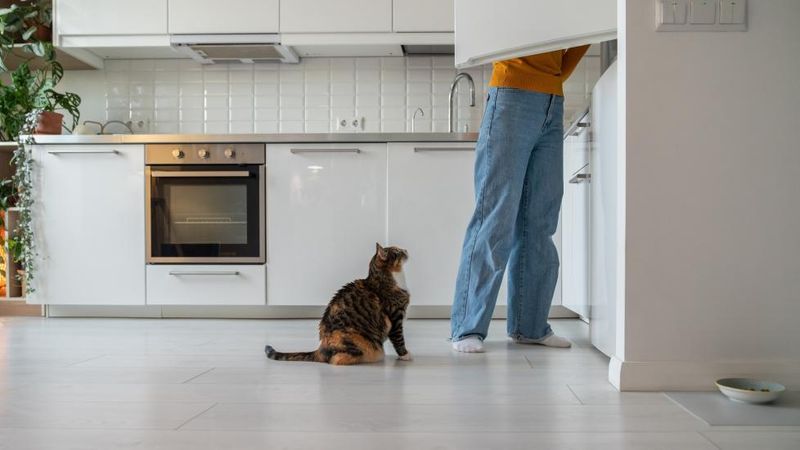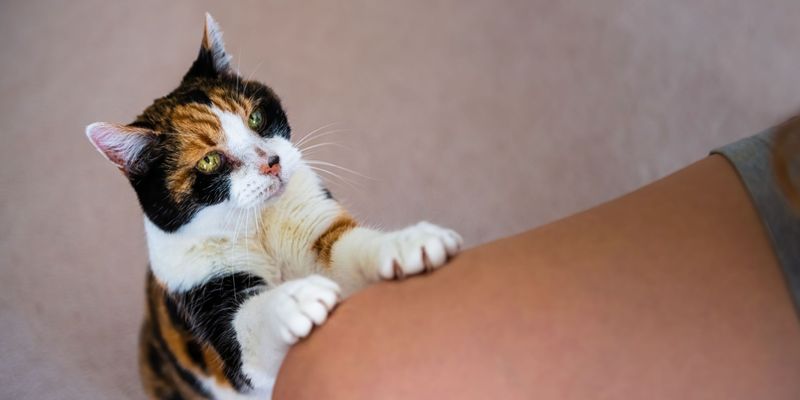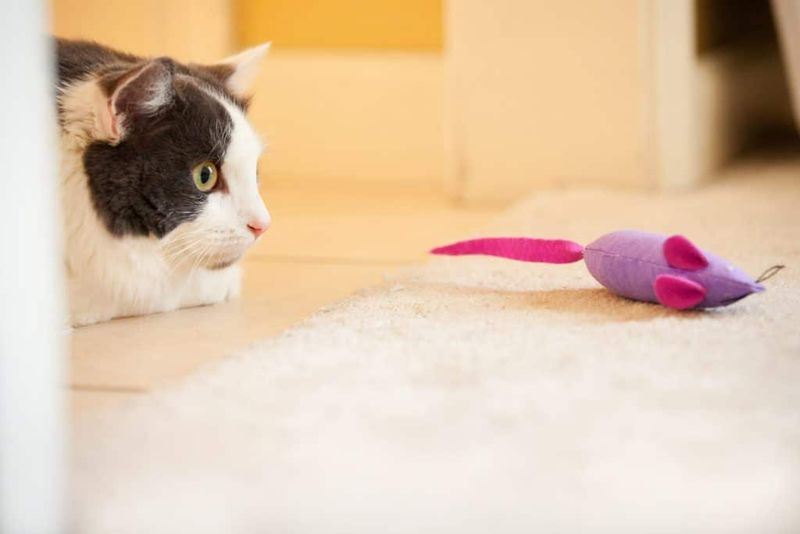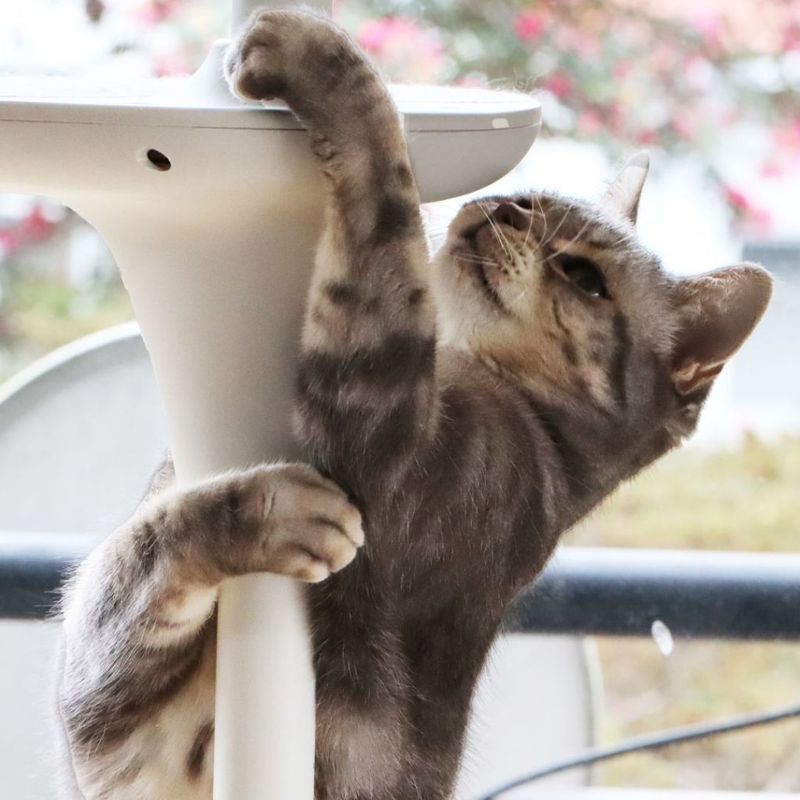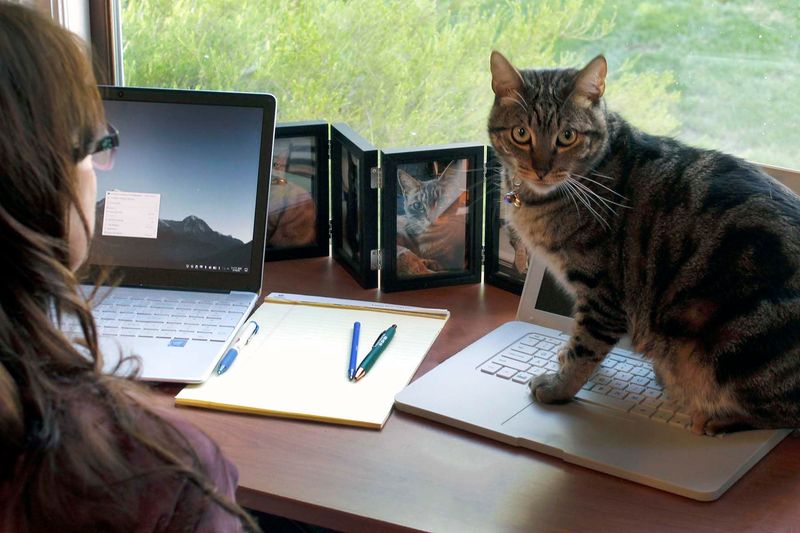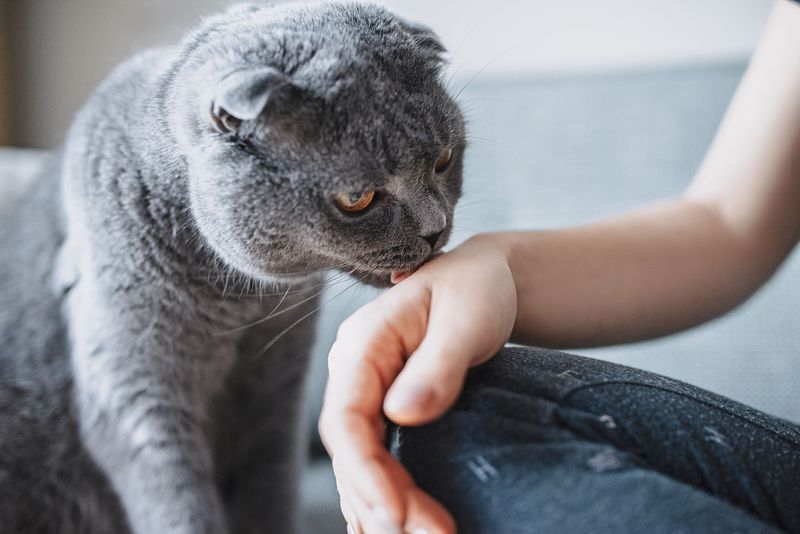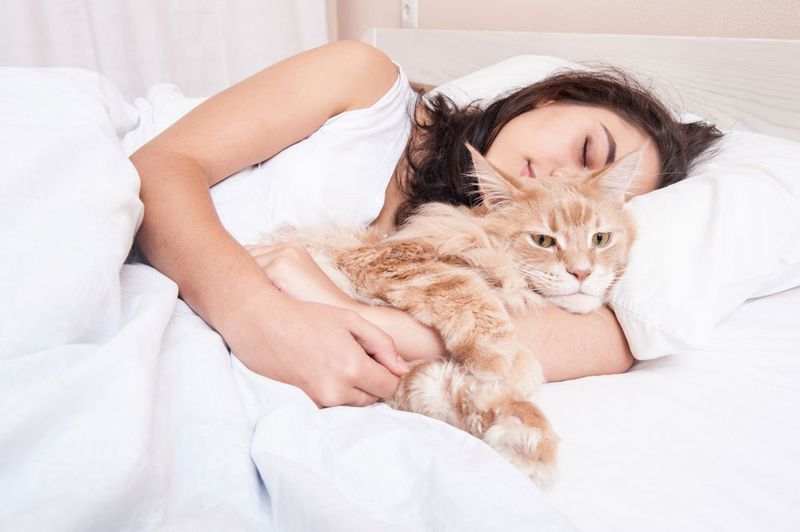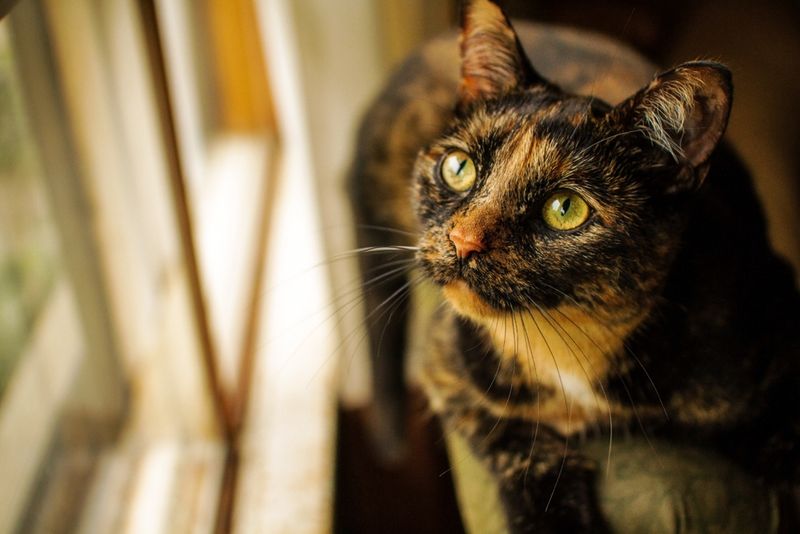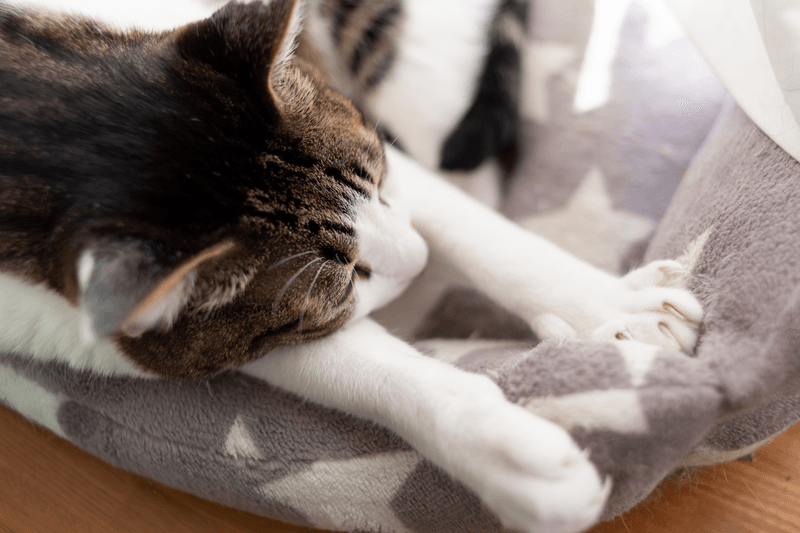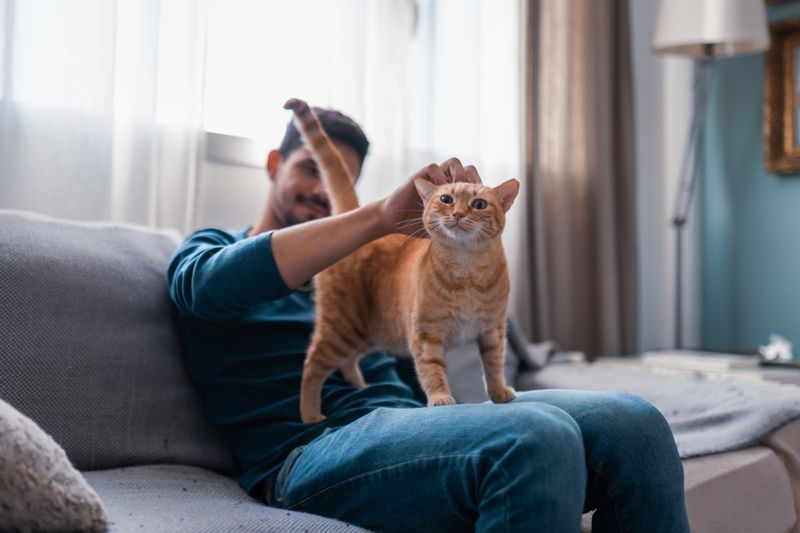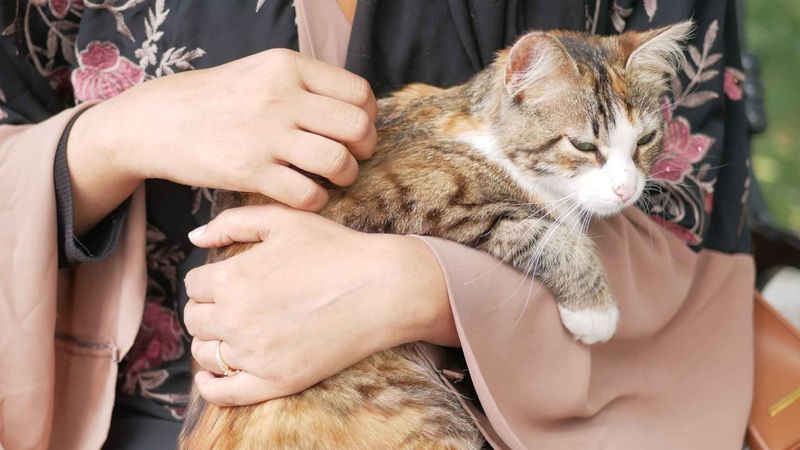📖 Table of Content:
- 1. Following You Everywhere
- 2. Excessive Meowing or Vocalizing
- 3. Pawing at Your Legs or Hands
- 4. Bringing You “Gifts”
- 5. Knocking Things Off Surfaces
- 6. Sitting On Your Belongings
- 7. Excessive Grooming or Licking You
- 8. Sleeping Near Your Face
- 9. Intense Staring Sessions
- 10. Increased Kneading or “Making Biscuits”
- 11. Tail Positions and Movements
- 12. Unusually Clingy Behavior
Cats have a reputation for being independent, but they need affection just like any pet. While they may not always communicate their needs directly, our feline friends have subtle ways of showing when they crave more attention. Understanding these quiet signals can help strengthen your bond with your cat and ensure they’re getting the love they deserve.
1. Following You Everywhere
Your shadow-like companion trailing behind you from room to room isn’t just being nosy. This persistent following behavior is one of the clearest signs your cat wants more quality time with you. Cats who feel neglected often become your constant companions, hoping you’ll notice them and offer some affection.
They might even squeeze into the bathroom with you or hop onto the kitchen counter while you’re cooking. If your previously independent cat has suddenly become your furry shadow, take a moment to pet them or engage in a short play session.
2. Excessive Meowing or Vocalizing
Sudden increases in vocal communication often signal a desire for interaction. Your typically quiet cat may start meowing more frequently, especially when you’re busy or distracted. Different meows carry different meanings – short chirps might be greetings, while long, drawn-out meows often indicate loneliness or boredom.
Some cats even develop special sounds just for their humans. Before assuming it’s just attention-seeking, rule out health issues, especially with older cats or if the behavior change is dramatic. Healthy cats who meow more than usual are likely saying, “Hey, I’m here! Pay attention to me!”
3. Pawing at Your Legs or Hands
Those gentle taps against your leg aren’t random – they’re deliberate attempts to get your attention. Cats use their paws as communication tools when they want interaction but aren’t getting it. The intensity of the pawing often indicates how desperately they want your focus.
Light taps might mean “whenever you have a moment,” while persistent pawing with extended claws suggests “right now, please!” Some clever cats learn that this behavior reliably gets a reaction from their humans. Responding consistently to these gentle reminders with brief attention helps satisfy their social needs.
4. Bringing You “Gifts”
Finding toy mice on your pillow or desk isn’t just your cat showing off hunting skills. These peculiar presents are often attention-seeking behaviors from cats who feel they need more interaction. Cats are natural hunters, and in feral communities, bringing prey to others is a social bonding activity.
Your domesticated friend is essentially saying, “Look what I can do! Aren’t you impressed? Let’s hang out!” Even if you’re not thrilled about the half-chewed toy mouse offerings, acknowledge your cat’s effort with praise and a quick play session. This positive reinforcement satisfies their need for recognition and connection.
5. Knocking Things Off Surfaces
That pen your cat deliberately pushed off the desk? It wasn’t an accident. Cats quickly learn that knocking objects over creates an immediate reaction from their humans, making it an effective attention-grabbing technique. This behavior often escalates when cats feel particularly ignored.
They’ll target items you’re using or valuable objects to ensure maximum response. The classic direct eye contact while slowly pushing something off a shelf is the feline equivalent of saying, “I need you to focus on me right now.” Counter this behavior by scheduling regular play sessions and providing alternative entertainment when you’re busy.
6. Sitting On Your Belongings
Your cat sprawling across your laptop, book, or phone screen isn’t a coincidence. Felines deliberately choose items you’re focused on because they want that attention redirected to them. The items carrying your scent also provide comfort to your cat.
Keyboards and laptops offer the bonus of warmth, making them particularly attractive lounging spots. But the primary motivation remains getting your eyes off the screen and onto them. Create alternative comfortable spots nearby with a soft blanket or cat bed. This compromise allows you to work while still maintaining the close proximity your attention-seeking cat craves.
7. Excessive Grooming or Licking You
Cats who suddenly become obsessed with grooming you are sending a clear message about their social needs. Mutual grooming (allogrooming) is a significant bonding activity among cats in the wild. When your cat licks your hand, arm, or even hair, they’re engaging in social bonding and marking you with their scent.
This behavior often increases when cats feel insecure about their relationship with you or need reassurance. Responding with gentle pets mimics the reciprocal nature of cat grooming colonies. While excessive grooming of themselves can indicate stress or medical issues, grooming you is almost always a sign they want more connection.
8. Sleeping Near Your Face
Your feline friend choosing to sleep directly on your pillow or near your face isn’t just about finding a comfortable spot. This intimate positioning demonstrates a desire for a closer connection and security. Cats are most vulnerable while sleeping, so choosing to rest near your face shows exceptional trust.
They’re also drawn to your breath and body heat, creating a comforting environment reminiscent of kittenhood cuddle piles. If your normally distant cat suddenly starts sleeping closer to your face, they’re likely seeking more emotional security and attention. This positioning also makes it easier for them to nudge you awake when they decide it’s time for morning affection.
9. Intense Staring Sessions
Those unblinking eyes fixed on you from across the room aren’t trying to read your soul. Your cat’s intense staring is actually a non-verbal request for interaction and acknowledgment. Cats communicate significantly through eye contact.
Slow blinks (often called “cat kisses”) indicate trust and affection, while persistent staring without blinking typically signals a desire for attention or play. The duration and intensity of the stare often correlate with their level of need. Try responding with slow blinks of your own, followed by an invitation to interact. This acknowledges their communication attempt and satisfies their need for connection without reinforcing demanding behavior.
10. Increased Kneading or “Making Biscuits”
The rhythmic pushing of paws against your lap, accompanied by purring, represents one of your cat’s most vulnerable displays of affection. This kneading behavior stems from kittenhood, when they stimulated milk flow from their mother. Adult cats who suddenly increase their kneading frequency are often seeking more nurturing interaction.
The behavior releases endorphins that create feelings of security and comfort for your cat. Many will enter a trance-like state during extended kneading sessions. While occasionally uncomfortable for humans on the receiving end of sharp claws, this behavior represents deep trust. Keeping your cat’s nails trimmed and providing a thick blanket buffer can make these bonding moments more comfortable.
11. Tail Positions and Movements
Your cat’s tail works like an emotional barometer, with specific positions indicating their desire for interaction. A tail held high with a slight curve at the tip signals a confident cat seeking friendly attention. The quivering or vibrating tail, especially when held upright as they greet you, indicates excitement and eagerness for interaction.
This subtle movement is easy to miss but represents one of the clearest signs your cat wants your focus. Cats who wrap their tails around your legs or arms are essentially hugging you, marking you with their scent while seeking physical closeness. Learning to read these tail signals helps you respond appropriately to your cat’s changing social needs.
12. Unusually Clingy Behavior
Sudden increases in lap-sitting, headbutting, or refusing to leave your side often indicate emotional needs that aren’t being met. Cats typically become clingier when they’re feeling insecure or need more attention than they’re currently receiving.
Environmental changes like new pets, moving homes, or schedule disruptions can trigger this behavior. Your cat might even become possessive, inserting themselves between you and other people or pets as a way of securing exclusive attention. While addressing the root cause of insecurity is important, providing extra affection during these clingy periods helps reassure your cat of their important place in your life. Regular, predictable interaction sessions can reduce anxiety-driven clinginess.
